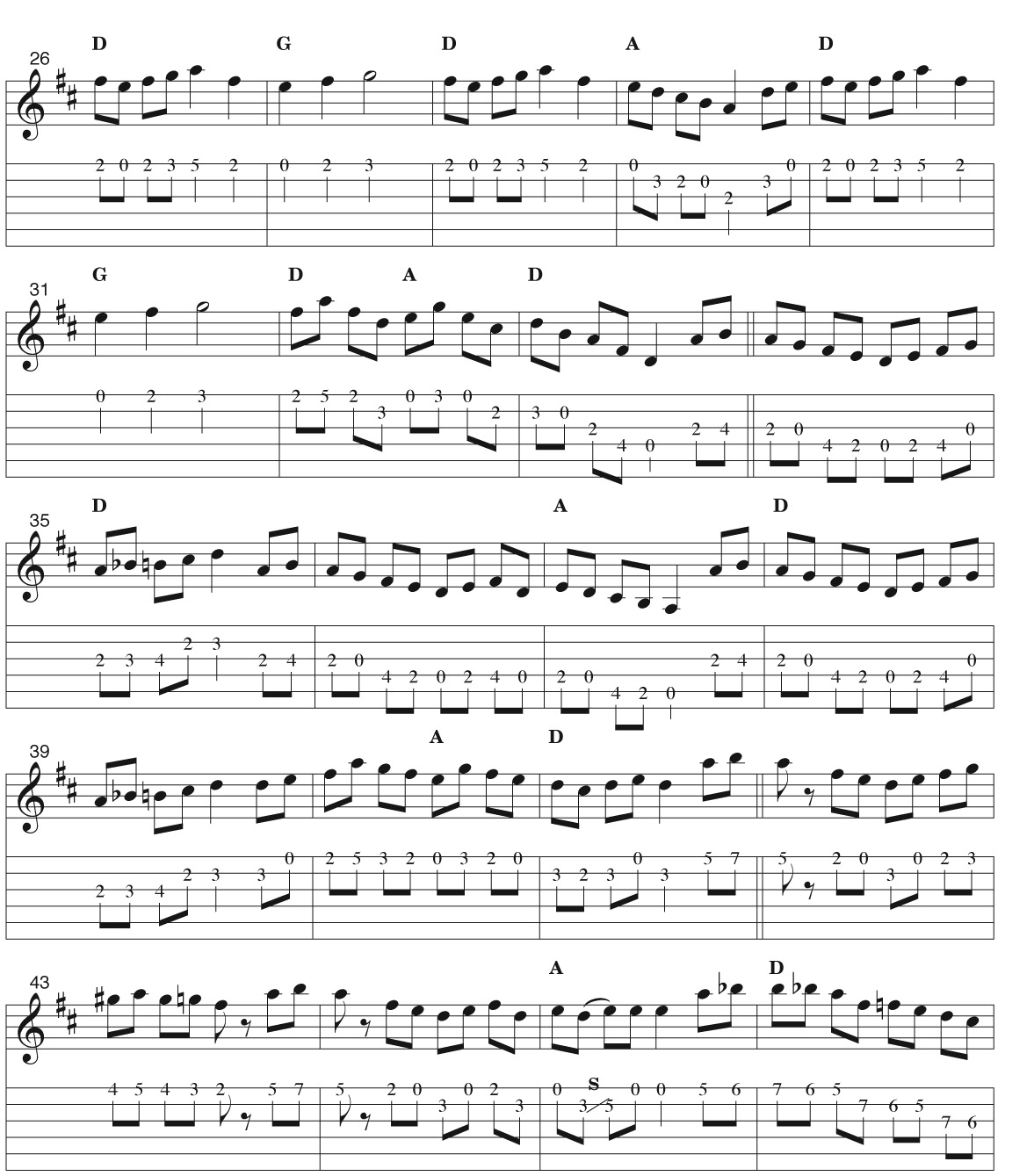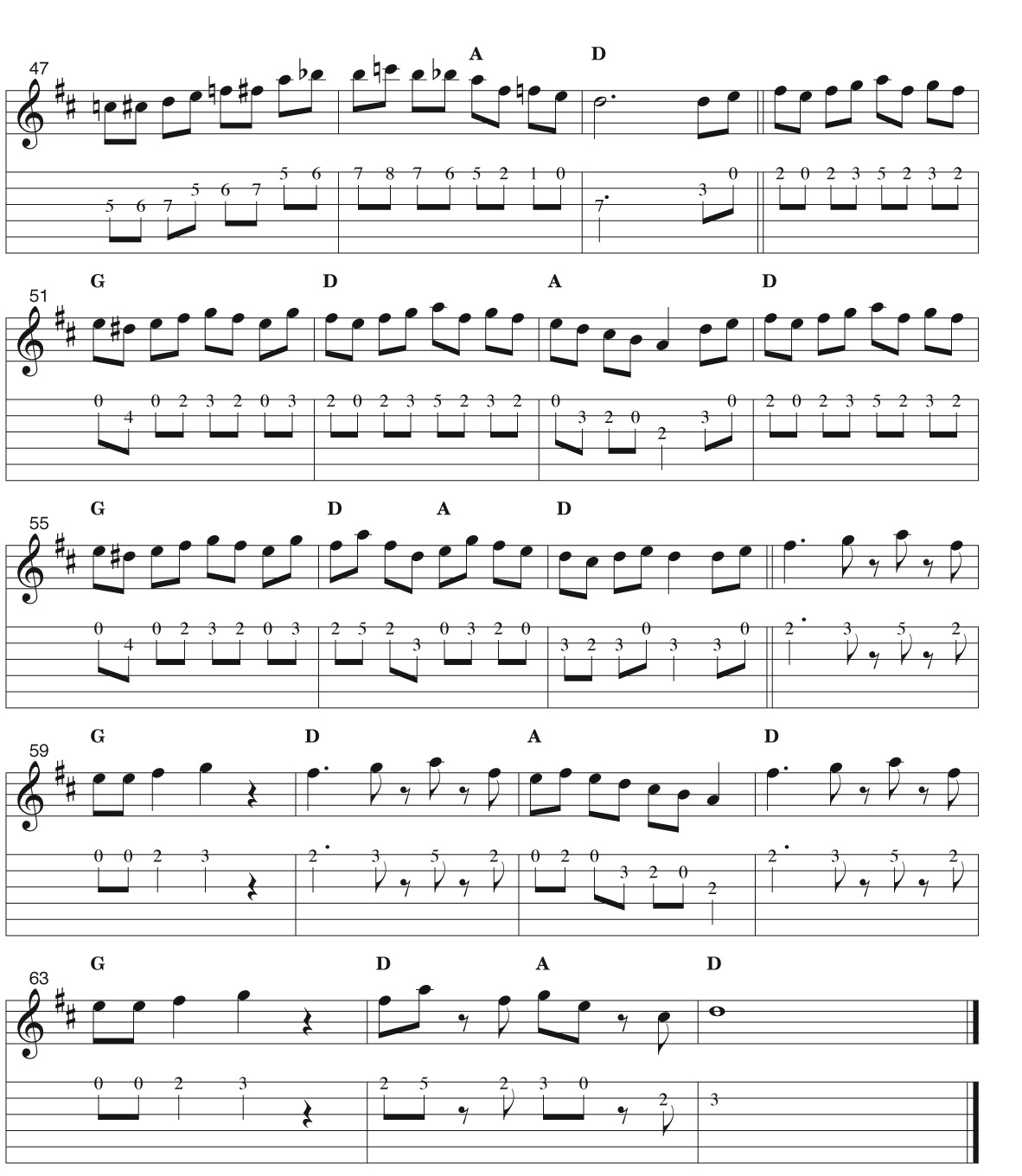Free Monthly Newsletter Lesson - December 2008
Parking Lot Standards by "Soldier's Joy"
by Mickey Abraham
Download MP3 | Download PDF
Hope you all e-flatpickers had a great holiday
filled with lots of family, food, and fiddle tunes! Welcome, once
again, to my online corner of the guitar universe. This month I offer
an arrangement of a flatpicking mainstay, “Soldier’s Joy.” This tune
seems to be a favorite amongst parking lot pickers and I can see why;
catchy melody, easy chords, it’s got a good beat, and you can dance to
it! I have enjoyed teaching, performing, and recording this tune and I
have faith that you too will find comfort in this melody.
Many great guitarists like Clarence
White, Tony Rice, and David Grier have recorded “Soldier’s Joy” out of
“C” position using a capo on the second fret. I do this too, but for
this lesson, I wanted to explore the tune without the use of a capo.
I’m playing out of open “D” position which lends itself to second
position (first finger plays 2nd fret). When playing a D major scale in
open 2nd position you will encounter the B note (6th tone in the
scale) —many guitarist prefer to sound this note with the open B
string, while others like the 4th fret of the G string. I use both in
different situations and I encourage you to experiment to see which you
gravitate towards.
This lesson includes two versions
of the tune. The first version contains lots of quarter notes and, to
me, really brings out the bare bones of the melody. I like to take this
approach to any fiddle tune. Take the time to explore an easy
version—one that is completely playable beginning to end. I leave off
all slides, pulloffs, and hammers...basically try to express the tunes
with as few notes as possible. Once the tune is internalized you can
begin branching out to more complex arrangements. Version two of this
lesson is full of eighth notes, alternate picking, and some syncopated
surprises! Here is my advice when picking this song or any song—not
only should you pay attention to the notes, but also the distance
between the notes! (I’ll explain “distance between notes” more in
future lessons).
Besides being a killer tune,
“Soldiers Joy” also has a great history and is played all over the
world. My friend Chris Henry told me that in Ireland, where some
believe the tune originated, it’s called “Soldier’s Hornpipe.” Another
story says that the “soldier’s joy” was his pay, and that some people
call this tune “Pay Day in the Army.” Still another story claims that
the soldier found his joy the day he returned home from war, and that
this tune was played as a “welcome home” tune for returning Cival War
soldiers. I have also heard that “Soldier’s Joy” was a name given to
the tune by American civil war soldiers who nicknamed their morphine
“soldier’s joy.” The 1920’s Georgia band the Skillet Lickers, sang to
the melody.
Well twenty-five cents for the morphine,
and fifteen cents for the beer.
Twenty-five cents for the old morphine
now carry me away from here.
I find the history of famous fiddle
tunes to be fascinating. No matter what you call it or where you play
it remember to play with good timing, tone, and taste! Email me at [email protected]
with any question on this lesson or any ideas you have for future
lessons. Thanks for all your positive feedback on last month’s lesson.



|